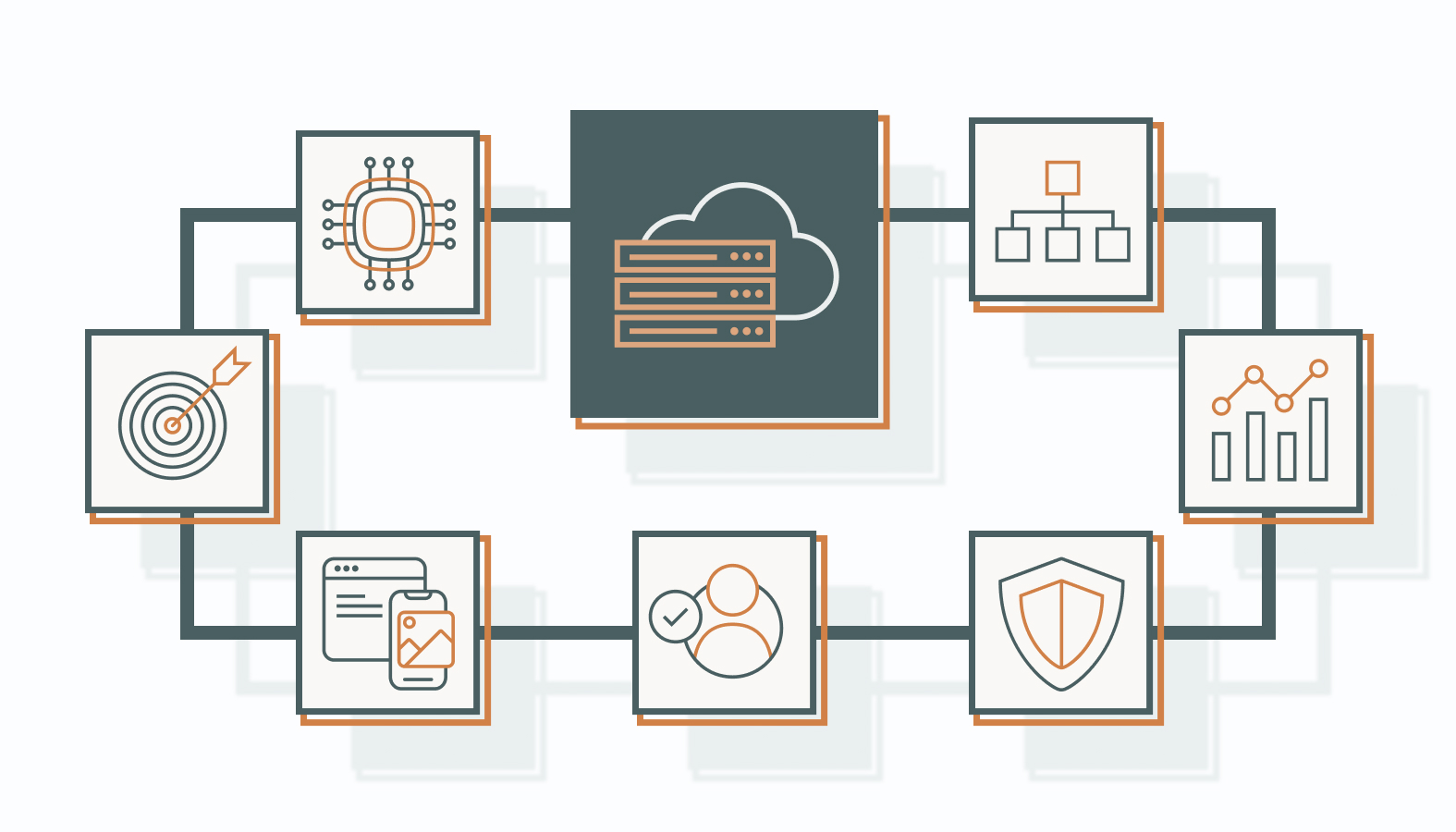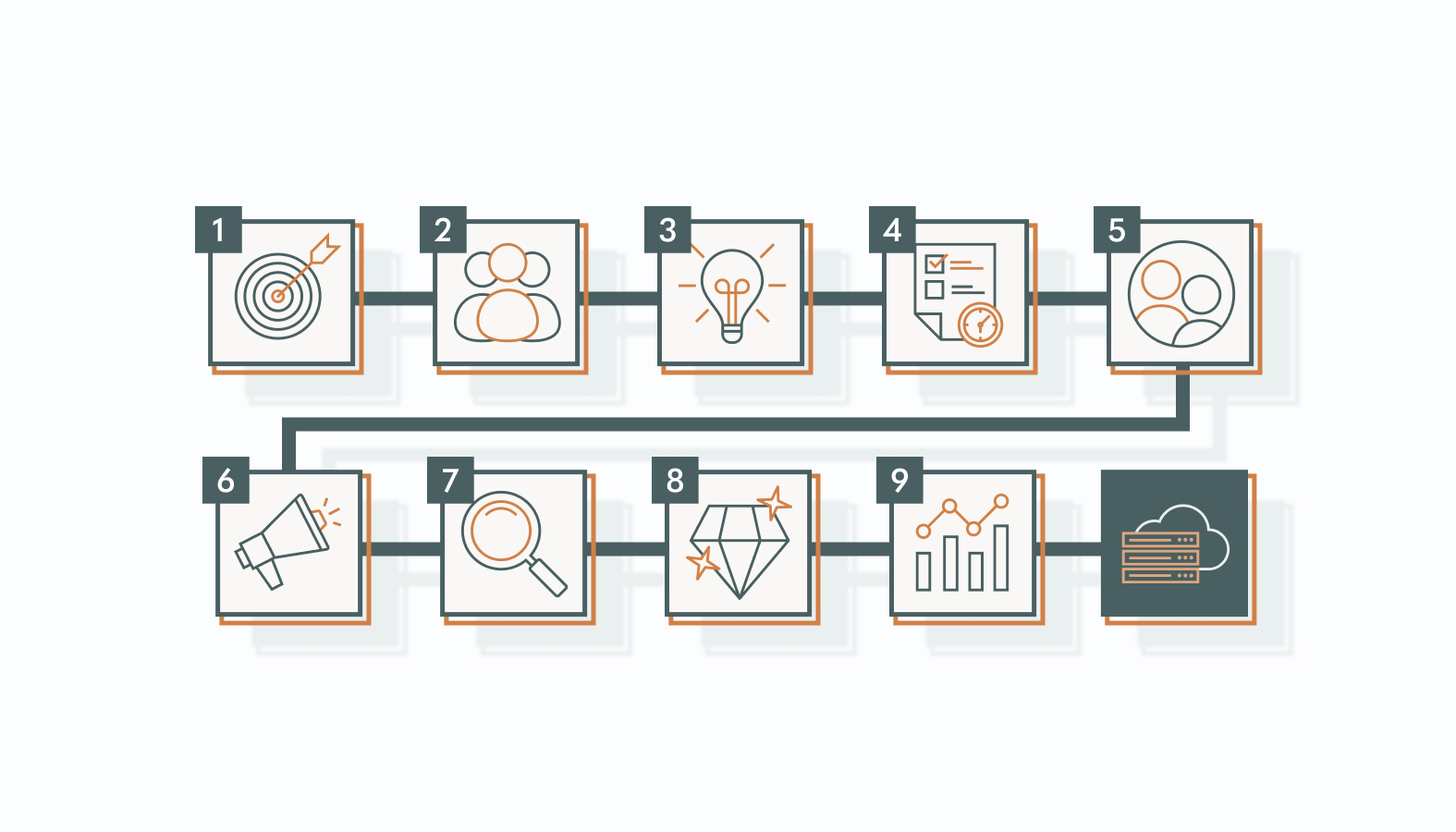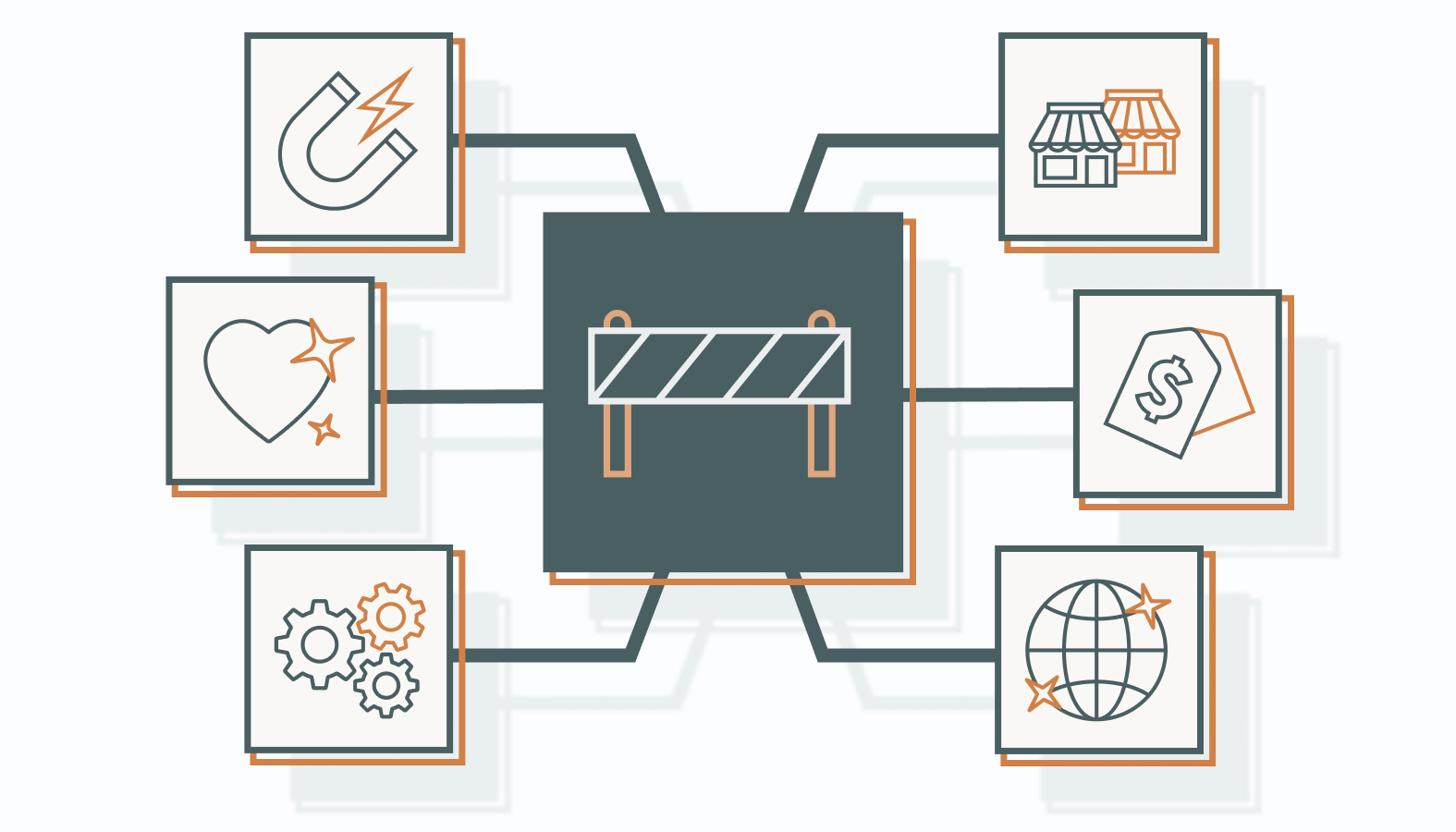SaaS growth marketing isn’t what it used to be, and that’s a good thing. The old playbook was too slow, too broad, too noisy. Today’s growth leaders don’t just throw spaghetti at the wall and hope something sticks. They orchestrate precision plays, driven by data, powered by AI, and tailored to real-time customer behavior.
In 2025, it’s not enough to stay in the SaaS game. You have to outmaneuver it, embracing personalization over mass outreach, agility over legacy funnels, and intelligent automation over manual guesswork.
The space is more competitive than ever, but it’s also never been more full of opportunity if you know how to navigate it.
This guide cuts through the clutter. Just proven strategies that scale: hyper-targeted segmentation, full-funnel analytics, mobile-first performance, and lifecycle marketing that drive retention.
Ready to stop playing catch-up and start pulling ahead? Good. Let’s build your growth engine.
Evolution of SaaS Marketing Strategies
There was a time when “getting the word out” was the whole job. Cast a wide net, hope for the best, and celebrate whatever traction trickled in. That era’s gone. Today’s SaaS marketing is about relevance.
The digital shift changed the rules. As channels multiplied and tracking sharpened, the spray-and-pray approach gave way to smarter targeting and real-time performance feedback. Fast-forward to now, and growth marketing is a different beast altogether.
Modern SaaS leaders don’t just market; they engineer demand. They use behavioral data to predict intent, feed automation engines that personalize at scale, and optimize campaigns mid-flight. AI isn’t optional; it’s embedded. And customer journeys are no longer linear — they’re dynamic, continuous, and expectation-loaded.
The big-picture shift in 2025 is clear: successful SaaS companies are moving away from acquisition at all costs and toward sustainable, long-term growth. They’re replacing reactive tactics with proactive strategies and trading generic outreach for experience-first engagement.
At the core of this shift is a deep commitment to understanding the customer as thoroughly as the product itself.
The SaaS leaders of 2025 and beyond are building meaningful relationships.
Core Strategies for SaaS Growth in 2025
SaaS isn’t slowing down, and neither should you. In a world of constant updates and tighter competition, growth depends on moving with speed, precision, and relentless focus on the customer experience.
Below are the strategic pillars that will drive growth this year:
1) Harness the Power of AI and Machine Learning
AI and machine learning are more than shiny objects. When done correctly, they can personalize your product experience in real-time, predict customer needs, and automate support at scale.
Automated customer service tools, such as chatbots, provide instant, 24/7 support, enhancing user satisfaction without the high cost of live support teams.
Beyond customer experience, AI can take over tedious workflows, freeing your team to focus on strategy. It also sharpens decision-making by delivering richer, real-time analytics. Translation: more impact, less guesswork.
2) Target Niche Markets with Vertical Solutions
The riches are in the niches and smart SaaS growth in 2025 starts there. By zeroing in on underserved industries with tailored solutions, you can achieve deeper market penetration and long-term customer loyalty.
Start with sharp market research. Identify the gaps that generic platforms ignore and dig into the specific pain points of your target vertical. Then, build features that feel custom-fit because they are. Whether it’s compliance requirements, workflows, or user expectations, speak the language of your industry.
Finally, position your product as the expert-built solution for that space. You don’t need to shout when your platform “just works” for a niche. Authority, trust, and word-of-mouth follow naturally.
3) Ensure Optimal Performance on Mobile and Remote Devices
Remote work and mobile-first usage are now standard. If your SaaS product isn’t built to meet those expectations, you’re already behind.
Responsive design, cloud-based processing, and offline functionality are table stakes. Users demand seamless performance across devices, frictionless syncing, and effortless collaboration, whether working from a laptop, tablet, or phone.
Mobile optimization improves UX, expands your reach, and supports the growing global workforce that logs in from anywhere. Deliver a consistent, high-performing experience across all environments, and you’ll stay relevant, reliable, and competitive.
4) Prioritize Customer Success to Boost Retention
Retention is always greater than acquisition. The fastest-growing SaaS companies don’t just support their customers; they actively invest in their success.
Great onboarding, proactive training, and real-time support ensure users actually understand and use your product. Monitor engagement data. Reach out before users ghost. A dip in activity is an opportunity to re-engage, not a reason to ignore it.
Prioritize customer success and turn it into a growth engine. When users feel supported, they stay, upgrade, and recommend the product to others. Build trust, deliver value, and watch referrals do the marketing for you.
5) Bolster Your Security Framework
Trust is a differentiator in SaaS. As compliance demands tighten and cyber threats evolve, security is no longer just an IT problem. It’s core to your brand and your bottom line.
Implement airtight encryption, run regular audits, and lock down user access with strict controls, but don’t stop there. Make your security posture a key part of your pitch. Customers aren’t just looking for protection; they want transparency and accountability.
Treat security like a product feature, and you’ll stand out in a crowded market. The companies that win are the ones customers feel safe with.
6) Leverage Data Analytics for Deeper Insights
Your SaaS platform generates more data than you probably realize, and signals that can shape smarter product decisions and better user experiences are buried in that noise.
Utilize Mixpanel, Tableau, or custom dashboards to track user engagement, pinpoint drop-off points, and monitor feature adoption. Go beyond passive reports by building active feedback loops that turn insight into action quickly.
And remember: smart data practices are about insights and trust. Follow privacy regulations to the letter and make ethics part of your analytics stack. Long-term loyalty depends on it.
7) Enhance Your Product’s Integration Features
Your SaaS product can’t stand alone in today’s hyper-connected digital workflows. Users expect seamless integration with the tools they already rely on, and the more effortlessly your platform connects, the more essential it becomes.
Invest in robust APIs, create plug-and-play integrations, and build middleware solutions where necessary. Partner with complementary platforms to expand your reach and utility. Every smart integration makes your product stickier, more versatile, and harder to replace.
Streamline Your SaaS Growth with Agile Operations
Agility in SaaS is a business imperative. Agile operations enable companies to adapt in real-time, respond to user feedback more quickly, and stay ahead in an ever-evolving tech landscape. The result? Streamlined workflows, smarter resource use, and sustainable growth that doesn’t rely on guesswork.
Set Clear Objectives and Goals
Every agile team needs a clear direction. That starts with SMART goals: Specific, Measurable, Achievable, Relevant, and Time-bound.
For example, instead of a vague goal like “increasing user engagement,” a SMART goal would be “increasing user engagement by 20% over the next quarter through targeted email campaigns and in-app notifications.”
But setting marketing goals is only half the job. They must be aligned with the company’s overall objectives. If your team’s running hard in the wrong direction, you’re just wasting velocity.
Build Your Agile Marketing Dream Team
Agility thrives on cross-functional firepower. Your marketing team should resemble a startup more than a traditional department, creatives crafting content, analysts translating data into actionable insights, developers supporting seamless execution, and marketers tying it all together.
Clearly defining each team member’s role and responsibilities is key to maintaining agility and efficiency. This doesn’t mean creating silos but rather fostering crisp collaboration, minimizing bottlenecks, and enabling fast decision-making. The clarity you build drives speed, and that speed is what keeps you adaptable.
Initiate Effective Sprint Planning
Sprint planning is essential for agile operations, as it sets the stage for focused, goal-driven work.
Begin by determining the sprint length, typically one to four weeks, and select tasks that align with your strategic priorities and can be realistically completed in that timeframe.
Establishing achievable sprint goals is crucial, as each goal should directly support your broader marketing strategy and drive measurable progress.
Develop a Comprehensive Sprint Backlog
Your sprint backlog is more than a to-do list. It’s a tactical playbook.
Break down complex projects into clear, manageable tasks, then prioritize ruthlessly by impact and urgency.
High-value efforts go first; the rest can wait their turn. A strong backlog keeps your team aligned, focused, and moving fast on what matters most.
Implement Daily Stand-Up Meetings
Daily stand-up meetings should be short, sharp, and useful.
- What did you do yesterday?
- What’s on deck today?
- What’s blocking you?
These meetings should be brief, typically lasting no more than 15 minutes, and cover what team members accomplished the previous day, what they plan to do today, and any obstacles they are facing.
Efficient standups keep your team aligned, transparent, and moving forward. They build accountability, surface roadblocks early, and eliminate the need for endless status updates so everyone stays in sync without losing momentum.
Launch and Manage Marketing Sprints
Execution is where many agile strategies fizzle. Keep momentum high with active engagement, clear communication, and a flexible mindset.
Regular check-ins and fast feedback loops maintain high momentum, while a culture of iteration enables teams to respond effectively to changing conditions. Teams should remain adaptable, adjusting strategies and priorities to stay on track and maximize productivity.
Evaluate and Learn from Each Sprint
Sprint reviews aren’t just routine. They’re your reality check: What did you accomplish? What missed the mark? Why?
Use this time to celebrate wins, identify gaps, and set the stage for improvement.
Follow that with a retrospective: What worked well? What bottlenecks can we eliminate?
Open, honest reflection builds a culture of continuous learning and sharpens every sprint that follows.
Refine Strategies and Prepare for Upcoming Sprints
Apply insights from the last sprint to adjust your backlog, sharpen priorities, and refine your strategy.
Every update should build on what you’ve learned: improving focus, speed, and impact.
Great agile teams don’t just deliver; they evolve with purpose. Controlled adaptation is what keeps momentum honest.
Continuously Monitor, Analyze, and Enhance Performance
Agile success lives in the metrics. Monitor key performance indicators (KPIs) in real time, analyze trends, and confidently course-correct.
Utilize digital tools to monitor campaign performance, customer behavior, and marketing return on investment (ROI).
Agile isn’t static. It’s a system of perpetual learning and optimization. The teams that win are the ones that treat performance data like a roadmap, not a report card.
Overcoming Common Challenges in SaaS Growth
SaaS growth isn’t a given; it’s earned through sharp strategy and the ability to adapt.
With competition intensifying and customer expectations rising, companies must outmaneuver challenges with precision to stay ahead and deliver lasting value.
Enhance Your Customer Acquisition Techniques
Successful customer acquisition starts with precision. Targeting the right audience is non-negotiable, and data-driven marketing is the key to unlocking that precision.
By tapping into demographic, behavioral, and psychographic data, you can craft messaging that speaks directly to your ideal customer.
The right tech stack, including Customer Relationship Management (CRM) systems and marketing automation tools, is a game-changer. These tools drive personalized engagement, streamline lead nurturing, and boost conversion rates, helping you scale efforts without scaling your costs.
Boost Customer Retention and Loyalty
Customer retention isn’t just a nice-to-have; it’s the backbone of long-term success. Building deep engagement with your users through loyalty programs and consistent feedback loops is essential.
Show your customers you’re listening and evolving, enhancing the product based on their feedback ensures that your service is always valuable and relevant.
Regular updates, timely feature enhancements, and superior customer support don’t just fix problems; they turn users into advocates, driving loyalty and long-term growth.
Efficiently Scale Your SaaS Operations
Scaling operations isn’t about throwing resources at the problem; it’s about smart, strategic automation. Whether it’s billing, customer support, or analytics, automation cuts operational costs while boosting efficiency. The right tech tools let you scale up without scaling costs.
Simultaneously, scaling requires the right team. Strategic hiring and comprehensive training empower your staff to handle the next level of growth, maintaining quality and performance even as demand rises.
Stand Out from the Competition
Differentiation isn’t optional; it’s critical. Your Unique Value Proposition (UVP) needs to stand out and resonate clearly with your target audience.
Highlight the unique benefits that make your product irreplaceable. Don’t just follow trends, set them.
Continuous innovation keeps you competitive. By staying ahead of industry trends and connecting to customer feedback, you ensure that your product evolves alongside your market, always relevant and fresh.
Develop a Winning Pricing Strategy
Pricing isn’t just about numbers; it’s a strategic lever for growth. With market research in hand, craft a pricing model that aligns with customer expectations while maximizing revenue.
Understanding how price influences purchasing decisions enables you to adjust accordingly, thereby boosting both profitability and customer satisfaction.
Consider flexible pricing models, such as tiered or usage-based pricing, which can capture a broader audience, catering to both budget-conscious and high-value customers.
Successfully Expand Globally
Global expansion is an exciting yet complex frontier. Success in new markets isn’t just about translating your product—it’s about cultural adaptation. Understand local preferences, customs, and languages to tailor your marketing approach.
Compliance with international laws and regulations is equally crucial. Ensure you’re navigating the complexities of each market by forming local partnerships that guide you through the nuances of new territories. When done right, global expansion drives exponential growth.
Embrace the Future of SaaS Growth with Confidence
The SaaS landscape is unforgiving, but full of potential. Those who lead will do so by thinking boldly, moving fast, and never losing sight of the customer.
To stay competitive, businesses must remain adaptable, continuously refining strategies as customer needs and market dynamics evolve. Building a culture of innovation and collaboration within your team is essential for harnessing collective expertise and creativity.
Success in the SaaS industry isn’t just about keeping pace — it’s about leading the way. By embracing bold thinking and staying ahead of industry trends, SaaS businesses can not only meet today’s challenges but also shape the future of the market. The journey ahead is full of possibilities, so stay confident, agile, and ready to soar.
Ready to Accelerate Your SaaS Growth?
Your growth journey is about to get a serious upgrade. With the right strategies and mindset, you’re not just keeping up; you’re ahead. You’re setting the pace.
Curious how these insights could work for your unique business? Let’s find out together.
Schedule a candid conversation with one of our experts. » We’ll talk growth goals, challenges, and what’s possible, just practical, actionable guidance to help take your SaaS business to the next level.









